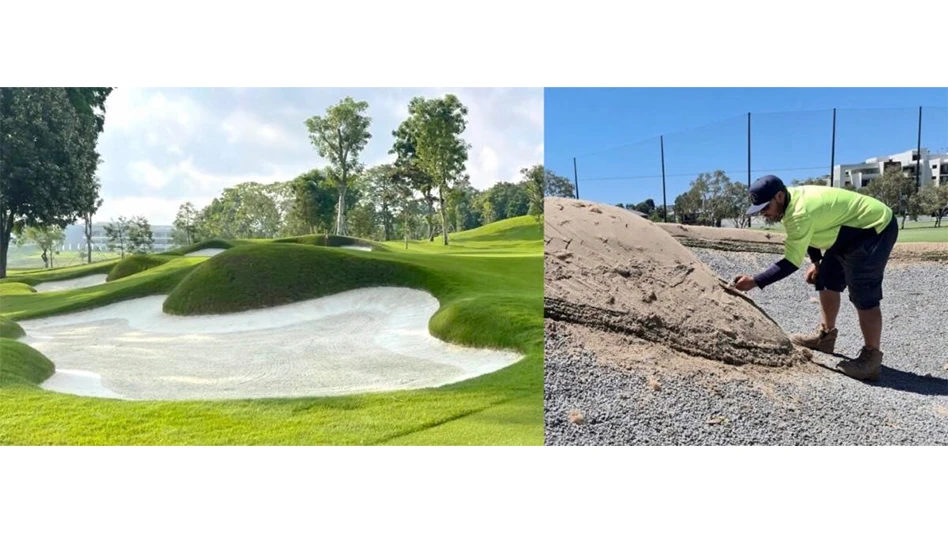
Golf Course Industry chatted with Frank Dean, product development manager at LidoChem, Inc. of Houston, Texas, about the benefits of bionutrition on golf course turfgrass.
In what ways can bionutrients/stimulants help protect turf this year, especially considering the tough weather some areas of the country experienced this winter?
When fertilizers and pesticides can’t get the job done biostimulants and bionutrients may fill the gap. Substances, including microorganisms, that enhance the plant's ability to acquire nutrients, competitively exclude pathogens, catabolize toxins, and provide benefits to plant development are called biostimulants. When applied in small quantities, bio-nutrients and bio-stimulants enhance plant growth and development and improve the efficiency of plant nutrients. In larger quantities, they act as soil amendments with demonstrated ability to help improve soil structure and enhance plant health.
When and how should bionutrients and biostimulants be used on turf?
What are the recent developments in the understanding of how bionutrition/biostimulants work and how they can benefit turfgrass?
Products with the ability to fix nitrogen, dissolve potash, phosphates and micronutrients allow flexibility to the entire fertilizer program. Personally, I am concerned with soil remediation. It is my belief improvements in technology, breeding and chemistry have changed the culture of the industry. Over time the industry has gone from heavy labor inputs to chemical reliance and later to chemical dependence. These changes may have occurred too fast and maladies now appear with no help from pesticides or fertilizers. These areas respond to biological soil amendments.
Soil microbial populations sometimes shift with the use of pesticides. The change in the kinds of bacteria and fungi left after a season of applications may prevent or slow down the degradation process. Months later the unforeseen consequences of earlier applications can rear their ugly heads. In this situation, fertilizer, pesticide, and working the soil may not be enough. It is in that situation bionutrients and biostimulants help by introducing beneficial microorganisms or inducing native beneficial soil populations to bring the soil back into balance.
Sponsored Content
Lawn and Landscape Marketing on a Budget
Digital marketing can feel overwhelming when you’re working with a limited budget. Websites, SEO, social media, and paid ads can quickly add up, but you don’t need to do everything to see results. By focusing on cost-effective strategies, you can still make a big impact without overspending.
Sponsored Content
Lawn and Landscape Marketing on a Budget
Digital marketing can feel overwhelming when you’re working with a limited budget. Websites, SEO, social media, and paid ads can quickly add up, but you don’t need to do everything to see results. By focusing on cost-effective strategies, you can still make a big impact without overspending.
Sponsored Content
Lawn and Landscape Marketing on a Budget
Digital marketing can feel overwhelming when you’re working with a limited budget. Websites, SEO, social media, and paid ads can quickly add up, but you don’t need to do everything to see results. By focusing on cost-effective strategies, you can still make a big impact without overspending.
Sponsored Content
Lawn and Landscape Marketing on a Budget
Digital marketing can feel overwhelming when you’re working with a limited budget. Websites, SEO, social media, and paid ads can quickly add up, but you don’t need to do everything to see results. By focusing on cost-effective strategies, you can still make a big impact without overspending.
Sponsored Content
Lawn and Landscape Marketing on a Budget
Digital marketing can feel overwhelming when you’re working with a limited budget. Websites, SEO, social media, and paid ads can quickly add up, but you don’t need to do everything to see results. By focusing on cost-effective strategies, you can still make a big impact without overspending.
How can you tell if bionutrients are right for your course and if they are working when applied?
The easiest way to tell if something is working is when it works. When the expected response from fertilizer and pesticide applications are disappointing, then it may be time to consider bionutrition.
Get curated news on YOUR industry.
Enter your email to receive our newsletters.Latest from Golf Course Industry
- Toro continues support of National Mayor’s Challenge for Water Conservation
- A different kind of long distance
- Golf Construction Conversations: Stephen Hope
- EnP welcomes new sales manager
- DLF opening centers in Oregon, Ontario
- Buffalo Turbine unveils battery-powered debris blower
- Beyond the Page 66: Keep looking up
- SePRO hires new technical specialist






